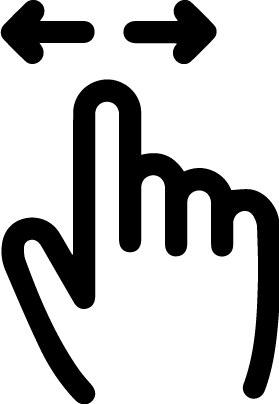As of the laboratory operations, we continue to satisfy the certification specifications to maintain the TAF accreditation via adhering to the stringent policy to implement inspections to ensure food products hygiene and safety.
We even adopted Laboratory Information Management System, LIMS, to effectively manage samples and associated data which allows us to automate workflows, minimize manual data entry errors, and integrate instruments to control and improve lab productivity.
At the same time, we are actively integrating and updating the enterprise resource planning system, ERP, with the LIMS system to facilitate the smooth communication of data, enabling faster access to information on raw materials, production, and inspection results, shortening waiting time, and improving all aspects of testing results and inventory management.
The proportion of investment in quality inspection relative to total revenue:
In 2024, the total expenditure on food inspection amounted to NT$13,832,496, approximately 0.22% of the company's total revenue from food products. The outsourcing cost for food product inspection and analysis was NT$4,040,393.
- Fwusow Industry Laboratory On-Site Analysis Items
 Read More
Read More| Inspection Type | Types of Analysis |
| Physical | Edible oils and fats: Color (Lovibond Tintometer), Oxidation Stability Index (OSI), Melting point, Cooling test, Sediment, Solubility, Color change, Oil meal. Cereals and other products: Moisture (oven method), Crude ash, Specific gravity (volume weight), Refractive index, Water activity, Particle size distribution, Color (Lab) |
| Chemical | Edible oils and fats: Moisture (Karl Fischer), Acid value, Peroxide value, Iodine value, Unsaponifiable matter, Total polar compound, Fatty acid composition (GC), Soap content test, Bleaching power of clay, Phospholipid. Cereals and other products: Crude fat, Crude protein, Urease activity, Uniformity test, pH value, Purity of citric acid(Titration method), Aflatoxin, Multimycotoxin(11 items), Pesticide residue (380 items) |
| Microbiological | Methods of Test for Food Microorganisms: Standard Plate Count (Aerobic Plate Count), Coliform bacteria, Escherichia coli, Staphylococcus aureus, Salmonolla |
Staff members have participated in training courses on laboratory equipment traceability and management to ensure proper equipment functioning and data reliability.
In 2024, 4 employees participated the related training, totaling 24 hours.
Implementing routine maintaince and calibration of instruments and equipment is our key to ensuring the accuracy of our analytical tools and measuring devices, thereby providing effective and reliable measurement results.
In 2024, we conducted 51 external calibrations and 55 internal calibrations. All calibration results, both external and internal, met the required standards.
With solid professional expertise and a comprehensive quality assurance system, our food laboratory continues to be recognized by the TAF. According to the accreditation cycle for extended certifications, a supervisory evaluation must be conducted within a 3-year period. Therefore, no formal evaluation was conducted by TAF in 2024. However, we have consistently adhered to all TAF requirements and have rigorously carried out related operations.
Our laboratory is managed by professional holding Level B technician for Food Inspection & Analysis, ensuring that our testing meets the highest standards. Each year, we undergo proficiency testing to enhance our inspection quality. Additionally, the microbiological cultivation methods we use strictly adhere to the testing procedures recommended by the Food and Drug Administration (FDA) or internationally recognized testing methods, ensuring the reliability and accuracy of our results.
In 2024, we participated in a blind proficiency test organized by a food institute, alongside 42 other firms. Our inspection results received satisfactory evaluations. Through regular training and participation in proficiency tests, we maintain and enhance the professional skills of our inspection personnel, ensuring that the inspection quality and results at Charming Food Inspection Laboratory are recognized by external organizations.
- Charming Food On-Site Analysis Items
 Read More
Read More| Inspection Type | Types of Analysis |
| Chemical | Veterinary Drug Residues (Rapid Test) |
| Microbiological | Standard Plate Count (Aerobic Plate Count), Coliform bacteria, Escherichia coli. Salmonella, Staphylococcus aureus, Enterobacteriaceae, mold, yeast |
- Fwusow Industry
In 2024, 13,475 batches of raw materials were inspected, with 18 failing to meet the standards, resulting in a pass rate of 99.87%. Additionally, 45,734 batches of semi-finished and final products underwent inspection, with 7 failing to meet the standards, resulting in a pass rate of 99.98%.
In 2024, outsourced analysis of raw materials and finished products totaled 1,813 samples, including 1,123 samples of oils and 690 samples of grains. 8 samples did not meet the standards, resulting in a pass rate of 99.56%, there has been a significant improvement compared to 2023.
- Charming Food
In 2024, Charming Food conducted a total of 44 inspections on broilers, raw materials, fresh meat products, processed products, and outsourced manufacturing items, amounting to 7,467 inspections. The "Animal Drug Residue" tests performed in 2024 totaled 620 pre- and post-slaughter inspections, with a 100% pass rate. The total operational and testing costs for the Quality Assurance Laboratory amounted to NT $6,157,164, approximately 0.4% of the company's total operating revenue.



